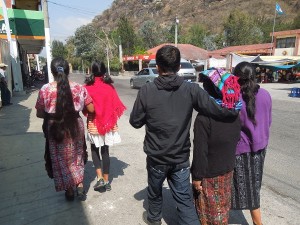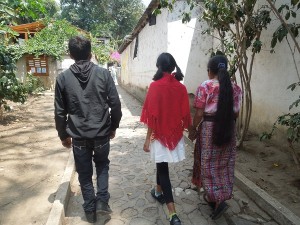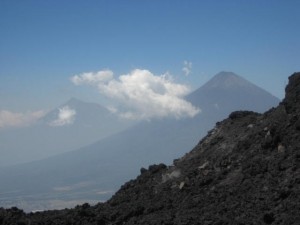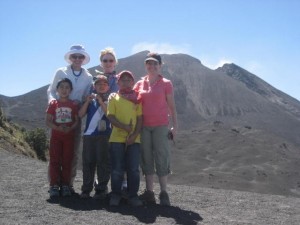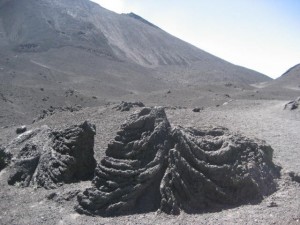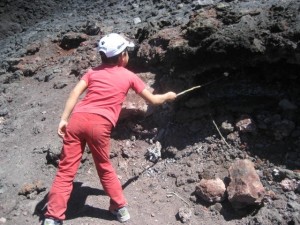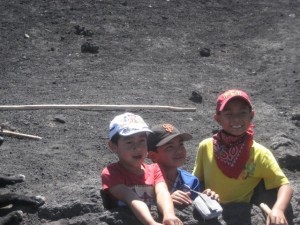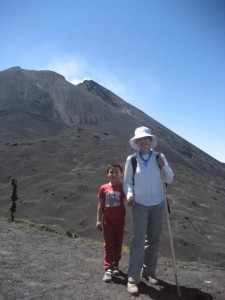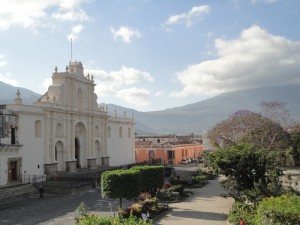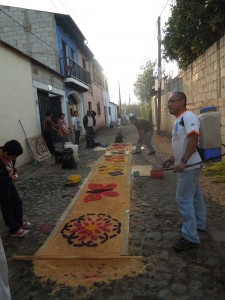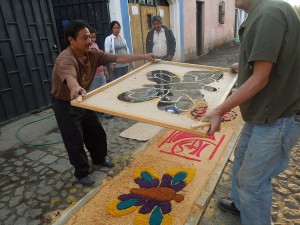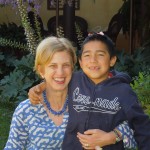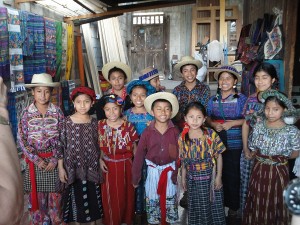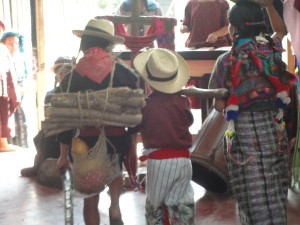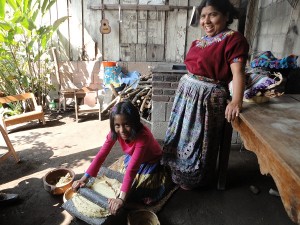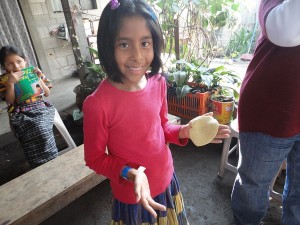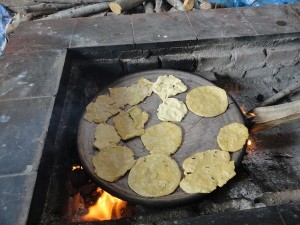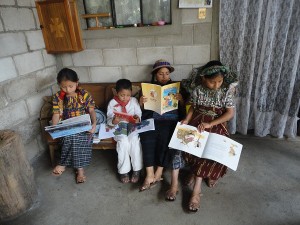Friends who plan to visit Guatemala often ask me for recommendations of what to do there. I recently posted a reply to that exact question on my Mamalita page on Facebook, and decided to re-post here. That way, if anyone asks again, I don’t need to, as a former boss of mine used to say, “reinvent the wheel.”
This list is not comprehensive–for example, I really like the small Textile Museum in Antigua, near the mercado, but it’s rather low-key and may not appeal to everyone. Also, an Indian restaurant friends introduced me to, Ganesh. In addition, now that our kids are older, we’re exploring towns farther afield. For example, in June 2014, we traveled to the Western Highlands to Nebaj and its environs. Again, not for everyone. I loved the kites at Sumpango, Christmas in Antigua, Semana Santa. But those trips require special planning.
So this is a general overview for a trip you might take in the summer, with kids, when you stay mostly in Antigua. Okay! Now that we’ve established the parameters…
So many, many things I love about Guatemala, it’s hard for me to narrow down. But for a first “big” trip back, a few ideas: the dancers of Ninos con Bendicion. Children wearing traje from each Department in Guatemala, marimba music, and your kids will learn how to make authentic tortillas. A visit to the Choco Museum. This is new-ish, but a big hit with my children. A shopping excursion to the Mercado, of course. Just to admire the crafts. A stroll through La Bodegona, Antigua’s main grocery store. Jade factory? Interesting, even if you don’t buy. A weaving demonstration somewhere. A meal at Pollo Campero. We saw a wonderful dance demonstration one night during dinner at Posada Don Rodrigo; can’t remember what night. Personally, my favorite place is the Municipal Mercado, near the Artisans Market. I wander through and see the stalls of fruit and beans and flowers and fabrics and ceramics, which for some reason makes me very happy. Could be daunting for a first trip–crowded and dim and a bit hard to navigate–arrange for a guide with Nancy Hoffman? A great store on Fourth Calle is Colibri. High quality woven textiles. Also Texura on Fifth Avenida. Nim Pot on Fifth is legendary, a must-see. Next door, the best bead store in town.
If you have time, a trip to Lake Atitlan. A spectacular setting surrounded by volcanoes. A lancha ride to a town on the Lake. Santiago Atitlan? An important cathedral there. Also, a specific kind of bedspread they make, with a lovely border along the edge. (one of which I own, btw, in purple). Also San Antonio Palpo, the blue pottery. If you sponsor a family at Mayan Families, or even if you don’t, visit them in Panajachel. Or Mission Guatemala in San Andres. A stop at the ruins at Iximche on the way to Pana. Handmade tortillas anywhere. For kid food, my kids love the chicken fingers and french fries at Mono Loco, the pizza at Queso y Vino, the pancakes at Dona Luisa, the fruit plate at Cafe Condessa. Everything at Epicure. Las Palmas for dinner. My kids love their grilled chicken and veggies with rice and tortillas. These may not be the “best” restaurants in Antigua, but the ones I found my kids consistently will eat the food. Which means “best” for us.
Hope this helps! And doesn’t add to your confusion. If you have specific questions, please ask. Buen viaje!
Here’s my post on climbing Volcano Pacaya. Might as well keep it all in one place…
Before I forget, I want to post about our recent ascent of Volcano Pacaya, my first ever volcano climb. Our friend, Nancy Hoffman of Guatemala Reservations, made the arrangements; she hired the guide and private shuttle through The Old Town Outfitters, in Antigua.
Our group numbered seven: Mateo, my sister Patrice, and I; and two other US adoptive moms with sons the exact age of Mateo—eight years old and all energy. Six of us made it to the top; one turned back and couldn’t finish.
It’s a tough climb! Much tougher than I thought it would be, and far more rigorous than the reviews on Trip Advisor led me to believe. We set off from Antigua at 8 AM, and didn’t return until 4 in the afternoon. Total hiking time was about three hours. The remainder was the bus shuttle, the getting ready, and the recovery. If you can request a particular guide, ask for Wilbur, an ultra-fit, uber-capable, bilingual triathlete who led us on an excursion our sons will never forget. Lava formations! A sunken sauna! Marshmallows roasted over naturally red-hot rocks! Not to mention the wild race to get down the mountain and earn the title of first to reach the finish. I’ve never used the word “pell-mell” in a sentence before, but that sums up the descent, exactly.
Crazy!
On the shuttle ride home, Wilbur admitted that guides at Old Town Outfitter lead climbs tougher than the ones taken by other companies, because that’s what their clients prefer. No wonder I slept like a rock that night. But don’t be alarmed: You’re probably in better shape than I am, and, regardless, Wilbur can tailor the hike according to your fitness level. Besides, there’s no shame in turning back if that’s what feels right.
A few tips:
Rent the walking stick. You’ll need it. You pay five quetzales from a local little boy or girl who will greet you the minute you arrive on-site. If you don’t thank me on the way up Pacaya, your knees will thank me on the way down.
Bring a substantial snack. Old Town supplies a delicious lunch, but if you’re like me, you need to nibble. Pack some power bars and fruit.
Carry more water than you think you will need. Two liters per person was not too much. Don’t forget a hat. Sunscreen. Sunglasses. If you’re there in dry season, the sun will blaze.
Wear sturdy hiking shoes and long pants. The lava is sharp, and the volcanic soil dusty. Two of our group members wore bandannas over their mouths to protect their lungs. I wish I’d thought of that.
The boys got to stand in the sunken sauna, which actually is some kind of subterranean hot-air vent. They thanked us Moms for making them wear long pants because their legs were toasting. (Don’t worry: They stayed in only a second.) Mateo cautiously roasted one of the many marshmallows he consumed while I was distracted taking pictures. Near the summit, he and I pose with my walking stick, victorious.
Climbing Pacaya stands out as a memorable highlight of our February 2013 trip. Do it if you have the chance! ~



 ShareThis
ShareThis